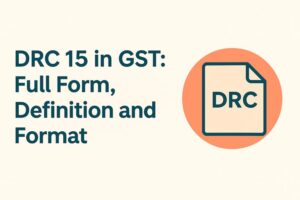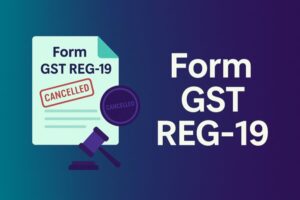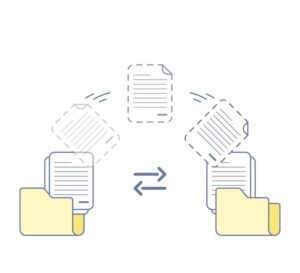How to claim input tax credit if supplier has not filed GSTR 1?
- 12 Aug 25
- 9 mins
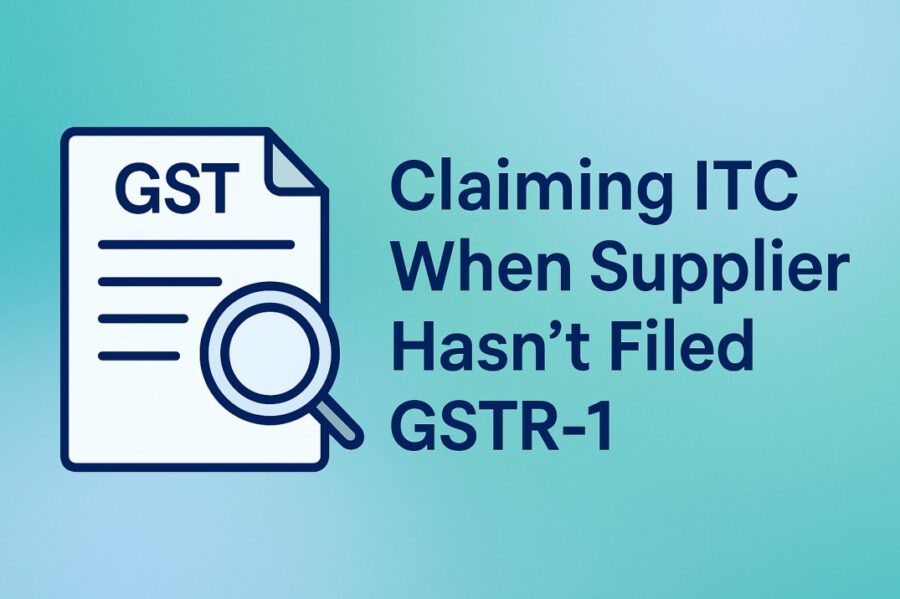
How to claim input tax credit if supplier has not filed GSTR 1?
Key Takeaways
- Rule 36(4) limits provisional ITC to 5% of eligible credit in GSTR-2B if suppliers fail to upload invoices on time.
- Supplier-filed GSTR-1 or IFF entries are essential for businesses to claim and retain GST Input Tax Credit.
- Delayed or missing invoices block ITC, impacting cash flow until suppliers file them in later periods.
- Self-declaration ITC claims are allowed temporarily, but must be reversed with interest if suppliers don’t comply within two tax periods.
- Active reconciliation and supplier follow-ups are critical to avoid ITC loss, penalties, and sudden tax outflows.
Businesses should use their IT benefits to protect cash flow and reduce their GST burden. If a supplier has not filed GSTR-1 or has not included the needed documents, the process becomes more complicated. Thus, making tax payments unexpectedly and credit blocks may occur often because of this issue.
In this article, we will detail the regulations, explain Rule 36(4) and show you methods of claiming ITC when vendors do not comply with the invoice furnishing facility. So, continue reading to ensure your business remains profitable and aligned with in-direct tax compliance.
What is Input Tax Credit (ITC) Under GST?
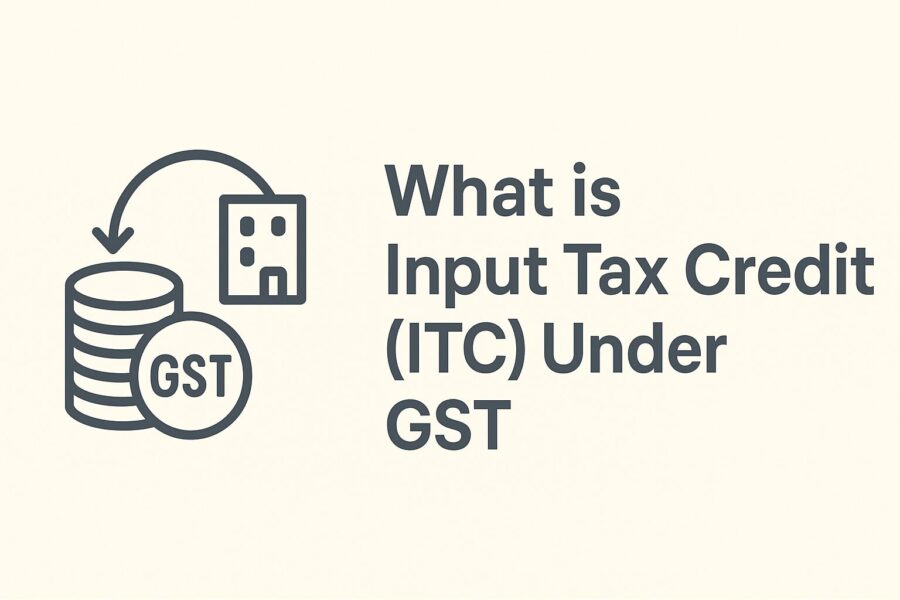
Businesses can lower their tax liability through the GST Input Tax Credit (ITC) mechanism by claiming credit for the GST paid on purchases made for business purposes.
For instance, you can claim Rs. 300 as an ITC and only pay the remaining Rs. 150 in cash if you are a manufacturer who owes Rs. 450 in output GST but has already paid Rs. 300 in input GST.
This helps to maximise cash flow in addition to ensuring tax efficiency. Businesses must, however, follow stringent guidelines, keep accurate records and guarantee prompt business compliance if they want to reap the full benefits.
The Role of Supplier-Uploaded Invoices in ITC Claims
Invoices uploaded by suppliers are essential for obtaining the GST Input Tax Credit (ITC). When your supplier enters invoice details in their GSTR-1 or Invoice Furnishing Facility (IFF), usually by the 11th of every month, your ITC journey officially starts. However, if the supplier has not filed GSTR-1, then you will not be able to claim ITC.
These invoices provide almost real-time visibility in your tax Invoice Management System (IMS) after they are submitted. For example, you can view and take immediate action even before GSTR-2B is generated if a supplier uploads a Rs. 10,000 tax invoice with Rs. 1,800 GST within the time limit. Your ITC claims' availability and validity are directly impacted by suppliers' timely and accurate uploads.
Rule 36(4) of the CGST Rules
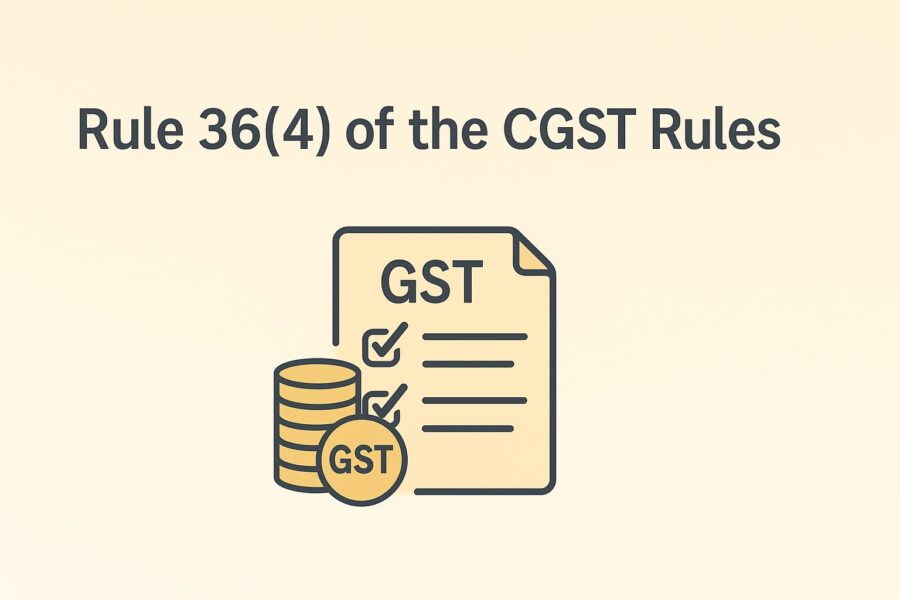
Business ITC claims are greatly influenced by Rule 36(4) of the Central Goods and Services Tax (CGST) Rules, 2017. In October 2019, a CBIC notification introduced this rule, banning provisional ITC claims for transactions where GSTR-2B does not contain the information for the tax invoice or when the supplier has not filed GSTR-1.
Being a registered person and a taxable person, you can claim up to 5% of the eligible ITC in your GSTR-2B as provisional ITC from 1st January 2021 under the new rule. At first, from October 9, 2019, to December 31, 2019, the allowable provisional ITC was 20%. This was then lowered to 10% for 2020 and again lowered to 5% starting in 2021.
The rule states that tax invoices should be uploaded on time by promoting regular reconciliation and following up actively with the suppliers. Effective GST management depends on following Rule 36(4) since not doing so may limit how much cash a business can work with.
Calculating ITC When Tax Invoices Are Missing
GST-registered buyers may temporarily lose access to the associated Input Tax Credit if a supplier has not filed GSTR-1. However, after the supplier uploads the missing tax invoices, this ITC can be claimed in a subsequent month.
To maximise ITC claims for buyers, relaxation to buyers and minimise out-of-pocket payment of tax, suppliers must upload their tax invoices on time.
The following table shows how ITC is calculated when there is a missing tax invoice:
| Particulars | Amount (in Rs.) |
| Eligible ITC as per books (Feb to Aug 2020) | 1,00,000 |
| Eligible ITC as per books (Sept 2020) | 20,000 |
| Total eligible ITC as per books (Feb to Sept 2020) | 1,20,000 |
| Eligible ITC reflected in GSTR-2A as on 11.10.2020 | 1,40,000 |
| Maximum ITC allowable (GSTR-2A + 10%) | 1,54,000 (1,40,000 + 10%) |
| ITC already claimed (Feb to Aug 2020) | 1,20,000 |
| ITC that can be claimed in monthly GSTR-3B- GSTR-3B for September 2020 | 34,000 |
Treatment of Ineligible ITC in GSTR-2B

Credit in respect of capital goods, services or purchases made for business purposes that can be used to reduce GST obligations is known as the Eligible Input Tax Credit. However, ineligible ITC may also be shown on GSTR-2B for things like club memberships, food expenses or inaccurate entries made by the supplier as a registered person using the incorrect GSTIN.
The 5% provisional limited credit in respect is determined by considering only the eligible ITC during payment of tax.
If the supplier has not filed GSTR-1 by the 11th of the subsequent month, taxpayers may claim ITC on self-declaration during the first 6-month period. The supplier has 2 more tax periods to match this provisional Input Tax Credit.
The recipient must reverse the claimed ITC along with any applicable interest and penalties if the supplier fails to upload the invoice as a registered person. For example, Mr. A and Mr. B are taxable persons. B must upload the invoice by June 2025 if Mr. A claims ITC for a purchase from B in April 2025; if not, Mr. A must reverse it in July.
Claiming ITC on Missing Invoices
During the first 6 months of the new GST return system's implementation, recipients can use the self-declaration method to claim Input Tax Credit on invoices that suppliers have not uploaded. This is relevant if the supplier does not upload the invoice by the 11th of the subsequent month.
With the requirement that the supplier report the missing invoices within the next two tax periods, the facility temporarily permits the recipient to claim ITC. Moreover, the registered person's claimed ITC must be refunded, along with any applicable interest and penalties, if the supplier does not upload the invoice within the annual time limit.
For example, Mr. A and Mr. B are taxable persons. Mr. A must reverse the ITC in July 2025 if he buys goods from Mr. B in April 2025 and Mr. B does not report the invoice by June 2025. During the initial implementation of the new GST return procedure, this system provides flexibility while guaranteeing business compliance with clauses.
Conclusion
It can be hard to figure out the Input Tax Credit (ITC) under GST, especially when dealing with suppliers who do not want to work with you or do not follow the rules. However, businesses can get the most out of their tax credits and keep their cash flow steady by understanding rules like 36(4), keeping their reconciliations up to date and using the rules for missing invoices during the transition period.
If a supplier fails to file GSTR-1 within the time limit, they must pay applicable penalties, proactively follow up to prevent future delays and maintain accurate records to ensure ongoing compliance.
This way, keeping up with the rules and information will make sure that your business stays profitable and is ready for India's changing GST environment.
💡If you want to streamline your payment and make GST payments via credit card, consider using the PICE App. Explore the PICE App today and take your business to new heights.
 By
By 






